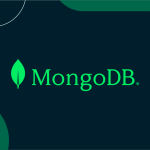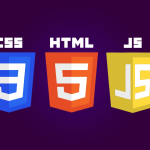In the rapidly evolving world of technology, few innovations have created as much disruption as blockchain. Often associated only with Bitcoin and cryptocurrencies, blockchain is far more than a financial tool. It represents a foundational technology that promises to reshape industries by bringing security, transparency, and decentralization into the digital era.
Table of Contents
What is Blockchain Technology
Blockchain is a distributed digital ledger that records transactions across multiple computers securely and transparently. Unlike traditional databases that rely on a central authority, it is decentralized meaning no single entity has control over the entire system. Each record or transaction is stored in a block, and these blocks are linked together chronologically to form an unchangeable chain.
This structure makes it tamper-proof and resistant to fraud. Once data is recorded on a it, it cannot be altered without altering every block that follows it an almost impossible task. You can explore a detailed technical explanation of how it works on IBM Blockchain.
Core Features
1. Decentralization
Unlike centralized systems that rely on a single server, it uses a peer-to-peer network where every participant (node) holds a copy of the ledger. This decentralization eliminates the need for intermediaries and makes systems more resilient to failures or cyberattacks.
2. Transparency and Immutability
All transactions recorded on it are visible to authorized users, ensuring trust between participants. Once a block is verified and added to the chain, it becomes immutable meaning it cannot be modified or deleted.
3. Security and Cryptography
Blockchain employs strong cryptographic algorithms to secure data. Each transaction is digitally signed, and blocks are verified through consensus mechanisms such as Proof of Work or Proof of Stake.
To learn more about these cryptographic principles, visit CoinDesk’s Blockchain Guide.
Real-World Applications of Blockchain
While it gained fame through cryptocurrencies like Bitcoin and Ethereum, its real potential extends much further.
Finance and Banking
Banks are adopting it to speed up transactions, reduce costs, and improve security. Cross-border payments that once took days can now be completed within minutes using blockchain-based settlement systems.
Supply Chain Management
Blockchain allows manufacturers, distributors, and consumers to track products through every stage of production and delivery. Companies like IBM and Maersk are already using it to ensure product authenticity and reduce fraud.
Healthcare
Medical records can be securely stored and shared through it, ensuring patient privacy while allowing authorized professionals instant access. Projects like MedRec by MIT are pioneering decentralized healthcare data systems.
Voting and Governance
Governments are exploring blockchain-based voting systems to make elections more transparent and tamper-proof. By ensuring every vote is recorded and verifiable, it can strengthen democratic systems.
Digital Identity
It can create self-sovereign digital identities, giving individuals full control over their personal information. This can revolutionize online authentication systems and reduce identity theft.
Benefits
- Enhanced Security: Cryptographic protection ensures data integrity.
- Transparency: Every transaction is visible to participants, improving accountability.
- Reduced Costs: Eliminates intermediaries like banks or brokers.
- Efficiency: Smart contracts automate and execute transactions instantly.
- Trust: Consensus mechanisms ensure agreement among all nodes in the network.
The Role of Smart Contracts
A smart contract is a self-executing digital agreement written into its code. When predefined conditions are met, the contract executes automatically without human intervention. For example, in real estate, a smart contract can release property ownership once payment is verified, without needing a middleman.
Challenges
Despite its advantages, it faces several challenges before achieving mass adoption.
- Scalability: It struggle with processing large numbers of transactions per second.
- Energy Consumption: Proof-of-work consume significant power.
- Regulatory Concerns: Governments are still defining laws around digital assets and decentralized systems.
- Interoperability: It often lack compatibility with one another.
However, ongoing research and the development of eco-friendly consensus methods like Proof of Stake are addressing these concerns.
The Future of Blockchain
The future of blockchain extends well beyond cryptocurrencies. With the rise of decentralized finance (DeFi), non-fungible tokens (NFTs), and Web3 applications, blockchain is at the center of the next internet revolution. It promises a digital future where users control their data, businesses operate transparently, and transactions occur without unnecessary intermediaries.
Conclusion
Blockchain technology represents a monumental leap in how data, value, and trust are managed in the digital world. It is not merely a financial innovation but a paradigm shift that could redefine how industries function. As research continues and adoption increases, blockchain is set to become one of the most transformative forces of the 21st century.
Aslo Check Neuralink & Rise of Ultimate Brain-Computer Interfaces 2025











1 thought on “Blockchain – Power of Fast Technology of Crypto – 2025”